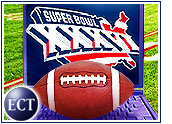
Recently, the E-Commerce Times explored the e-business opportunities in which teenagers, despite limitations on their purchasing power, should be an e-tail target, rather than an e-tail afterthought.
Without doubt, marketing online to adolescents poses economic, legal and moral risks. However, with those hazards taken into account, the Internet’s teenagers may yet provide rewards that e-tailers cannot afford to ignore.
In the third and final installment of this series on the e-business opportunites represented by teens, the E-Commerce Times takes a look at several Web sites geared toward teenagers. We explore which sites have what it takes to hold the shifting interests of teens, and which do the best job of channeling those interests to the bottom line.
The features of these sites range from community to commerce — and from sad to rad — all in an effort to reverse e-commerce’s image as a Teenage Wasteland.
Out Here in the Fields
Nothing attracts teens more than a place to hang out. A place to socialize, chat and gossip. Bolt is just such a place.
A community portal, Bolt offers a wide array of communications tools, thousands of message boards, music downloads, e-mail, home pages, clubs and more.
Bolt’s home page can be a bit overwhelming, especially for old folks, but this is the MTV era, and the more the teens have to do in one place, the less likely it is they will get bored and leave.
The key to Bolt lies in its subtlety. There are very few direct attempts at selling, although one does get the occasional Covergirl or Maybelline pop-up ad, as well as banner ads. However, many of these ads lead directly to more content space or branded games.
Time To Bolt
The vast majority of sponsor links are found in what is undoubtedly one of the most popular spots on the site: “Free Stuff.” What teenager could turn that down?
However, one problem is that the Free Stuff section is a tad misleading. The section contains banner after banner of sweepstakes ads from leading sponsors such as Verizon, Oxy and Pringles. Sure, there is free stuff … if you win it.
One wonders how today’s cynical teenagers will respond to these “sweepstakes” on a regular basis. The covert approach to establishing brand identity makes sense when your target has limited credit card ability, but the key word here is covert.
It also seems ironic that, amid all the sponsored sweepstakes and games, the Bolt logo itself is so small that it risks getting lost in the shuffle. Then again, maybe the executives at Bolt do not care, so long as the sponsors (and teenagers) keep coming.
Heavy Metal
In contrast to Bolt’s subtle approach to e-commerce and sponsor branding, Alloy.com goes right for the score. The layout is much cleaner, the colors brighter, and the “Shop” tab prominent.
While the content is much slimmer at Alloy than on Bolt, the topics and approaches are fairly similar. You’ll find prizes to be won, fashion tips to be found, chat rooms to visit, and even music videos. But you’ll also find something unique to teen-focused retail Web sites: a co-branded mail order catalog.
Alloy relies directly on e-commerce and mail order, as well as advertising to make a buck, and it does so through a combo of content, commerce and community. Its online storefront (as well as its offline catalog) contains typical products for the market: clothes, accessories and books. Its success has lead to several rounds of venture capital financing in an otherwise dry environment.
Ahoy, Alloy
While Alloy’s storefront is run-of-the milll, an innovative element can be found in its WishList feature, which encourages teens to create an Alloy gift request list and send it to family and friends.
The feature shows that Alloy understands that to capitalize on the teen market, it will need to follow the money trail.
Alloy’s advantage is that even when consumer spending drops, Generation Y-ers will still want to get information on their favorite singer or movie star, and will always want to converse with friends regarding the latest fashions, movies and music.
The problem for Alloy is that other sites that provide better content could win out.
Duck Duck Goose
Finding the right attitude is essential if e-tailers expect to become a hit in the teen market. The latest idols or fashions come and go, and somewhere in between e-tailers must find consistency that resonates.
Goosehead.com has enough attitude to ruffle any parent’s feathers. It also contains some of the coolest content out there — and it should, considering it was created by a teenager who found online attempts by adults to relate to teens and speak their language futile.
Goosehead.com TV, one of the features on the site, airs a counter-culture streaming bi-weekly TV show called “Whatever.” The site also has live video chats, message boards, e-cards, homework help, movie reviews, advice on teen issues, and an area that allows Goosehead.com members to build their own Web sites.
E-tailers can learn a lot from Goosehead simply by virtue of its brand identity and content. It clearly separates itself as “by teens for teens” and its sponsors can tell the difference.


























































Social Media
See all Social Media